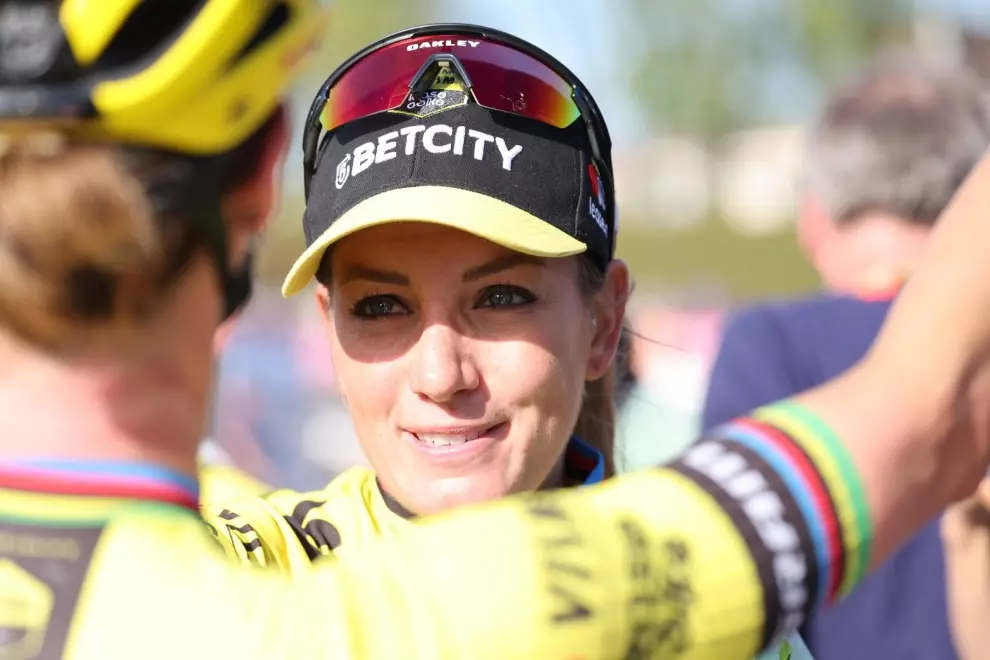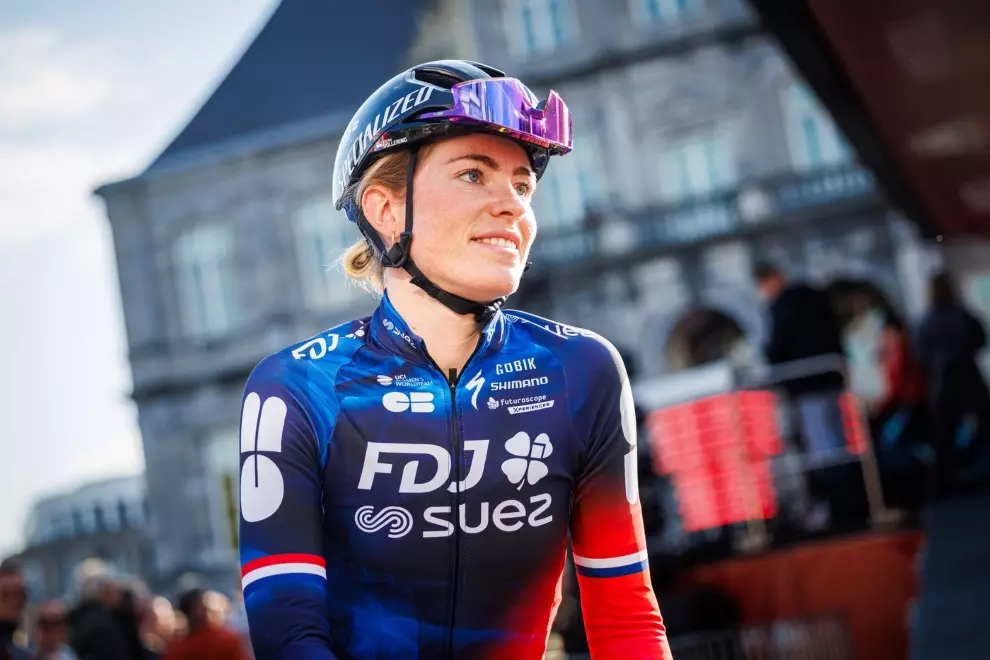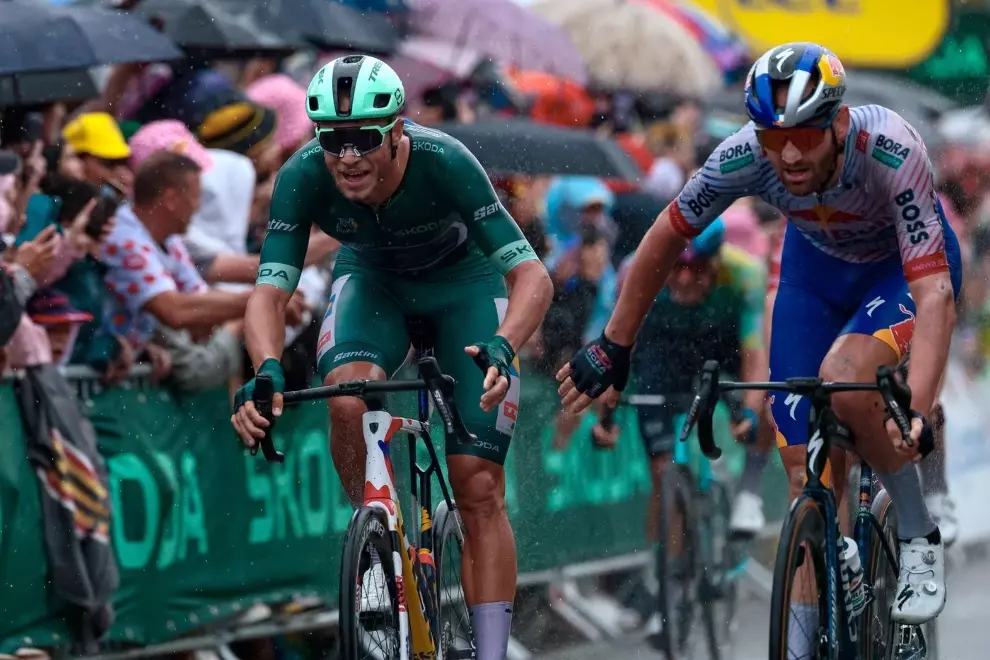Hannah, could you walk us through your typical day during the Tour de France? Let’s start at the beginning, what time do you have to get up?
As a team chef, your entire day revolves around the start and finish of the race. In the morning, the riders eat breakfast 3 hours before the neutral start. That means the food has to be ready for 8:00 in the morning if the stage starts at 11:00. Depending on the hotel and how far the dining room is from the kitchen truck, wakeup time is around 6:15 to be able to bake bread, cook rice and get everything ready.
That’s early! And what does the rest of the day look like?
First things first, jump in the shower, get dressed, have a coffee and get the breakfast ready.
Once the riders come down to eat, we pack the recovery meals for after the race and start cleaning and closing down the kitchen truck, so it can get on the road as fast as possible.
When the truck is on the road, the chefs can eat a quick breakfast as the riders leave; typically, it’s leftovers from the rider breakfast buffet.
Once the riders leave in the bus for the start, we pack up the full breakfast table, the coffee machine, and go get our suitcases. We pack the car and hit the road for the daily transfer, which can be anywhere from 150 km to 900 km every day.
On days when the next destination hotel is in the mountains or a remote area, we stop as close to our destination as possible to shop for the groceries needed for the day.
Then we check in at the hotel and have lunch and a small nap if possible. As a team chef, you are the first person to get up and the last to go to bed for 25 days in a row during a grand Tour, so it’s important to squeeze in any rest you can.
Next, I have to figure out where the kitchen truck can be placed and make sure it has water and electricity connections. Sounds easy but when five teams are staying at a hotel, there is not always enough for everyone. And if you’re last in the water-hose chain, you basically have no water, since the pressure is gone. So, it’s always a battle to get to the next hotel as fast as possible to get a good spot.
Then we greet the people at the restaurant to connect and see if everything is as we emailed them prior to the race. That means the dining table, buffet table, chairs, plates, cutlery, etc. Yes, even the smallest details have to be checked in order to be prepared for a hungry group of riders later.
Once everything has been checked, it’s time to start cooking dinner. We never know exactly when they eat but once the bus hits the parking lot at the hotel after the race, you know there are around 2-2,5 hours until dinner must be ready.
When the riders have had their massage after the race, they come down for dinner. As they eat, we clean up the kitchen. After dinner, the staff typically gets to eat the leftovers as an extra dinner, since sometimes the hotel food can be a little bland or uninspiring for the staff. When the leftovers are gone, we clear up the buffet and set everything up for breakfast.
After that, finally, it’s time to sleep.
That feels like a really long, high-stress day. How do you get enough rest while juggling these demanding responsibilities?
Sleep when you can, that’s the number one rule. Even a 15-minute nap in the afternoon will make the difference in preventing a mental meltdown in the evening if something goes wrong. Also, when there are 2 people in the kitchen, it is important to make sure that you take turns to sleep a bit extra when needed. We even take turns sleeping in on the rest days.
How do you handle the logistics of driving around and being in the right place at the right time?
Practice makes perfect. The Tour de France roadbook is your friend, it’s so important to look at the next day’s transfer, so you don’t get stuck behind closed roads and the race. I learned it the hard way. Get out of the hotel in the morning as fast as you can or else you’re stuck. I guess what I’m trying to say is – plan, plan, plan.
Could you tell us a bit about your kitchen truck? Do you have any special equipment that we wouldn’t find in a typical restaurant kitchen?
A typical kitchen truck in the peloton has a large-size cooktop and at least one oven. Cooking for 8 riders is the equivalent of cooking for 24 regular, non-rider people, so you need equipment and space to cook for that many people. Different teams have different setups but in general, the kitchens are smaller and well-equipped catering kitchens.
How much food does a pro rider eat per day on average?
One rider typically eats three times as much as a “normal person”, so around 6,000 kcal per day, and on the hard stages, it can get up to 12,000 kcal. It’s a crazy amount of energy consumed. However, a lot of the calories are consumed on the bike via drinks, gels and snacks, packing up to 120 g of carbs an hour.
Shopping for this much food must be a challenging task, especially in remote locations throughout the Tour. How do you make sure you have high-quality local ingredients every day?
As a team chef, you have a few options. You can shop at the local shops that are close but don’t always have quality products and have a very narrow selection. You can also order produce through the hotel in advance; however, this is a bit tricky since they might not have all you need or they ordered too much or too little or the right things.
Lastly, the best plan is to go to big commercial centres and find a large supermarket chain, this is further away sometimes but you know you can get organic and fresh produce. Some of the teams have food delivered to them at the Tours from their sponsors, which is absolutely amazing, but not an option for all teams.
Doing all of that shopping and cooking sounds like more than a one-person job. Do you have a sous chef? Or what kind of help do you get in the kitchen?
I had an apprentice with a lot of responsibility. Most team chefs have some sort of an assistant since you will run yourself to death if you are alone.
What if someone wanted to join your cycling team’s kitchen? How hard is it to get that job?
Oh, I get asked this so often. It’s very random how people get into cooking for a team but most chefs I have met in the peloton have gotten their jobs through networking and random chances. Remember, there are not a lot of spots for team chefs, and they don’t change very often. So, all I can say is keep an eye out if you want to get into cooking for a team. Also, it’s ideal if you have experience cooking for athletes and it’s important that you understand the basics of nutrition. I do my best to teach people about this in my Grand Tour Cookbook.




